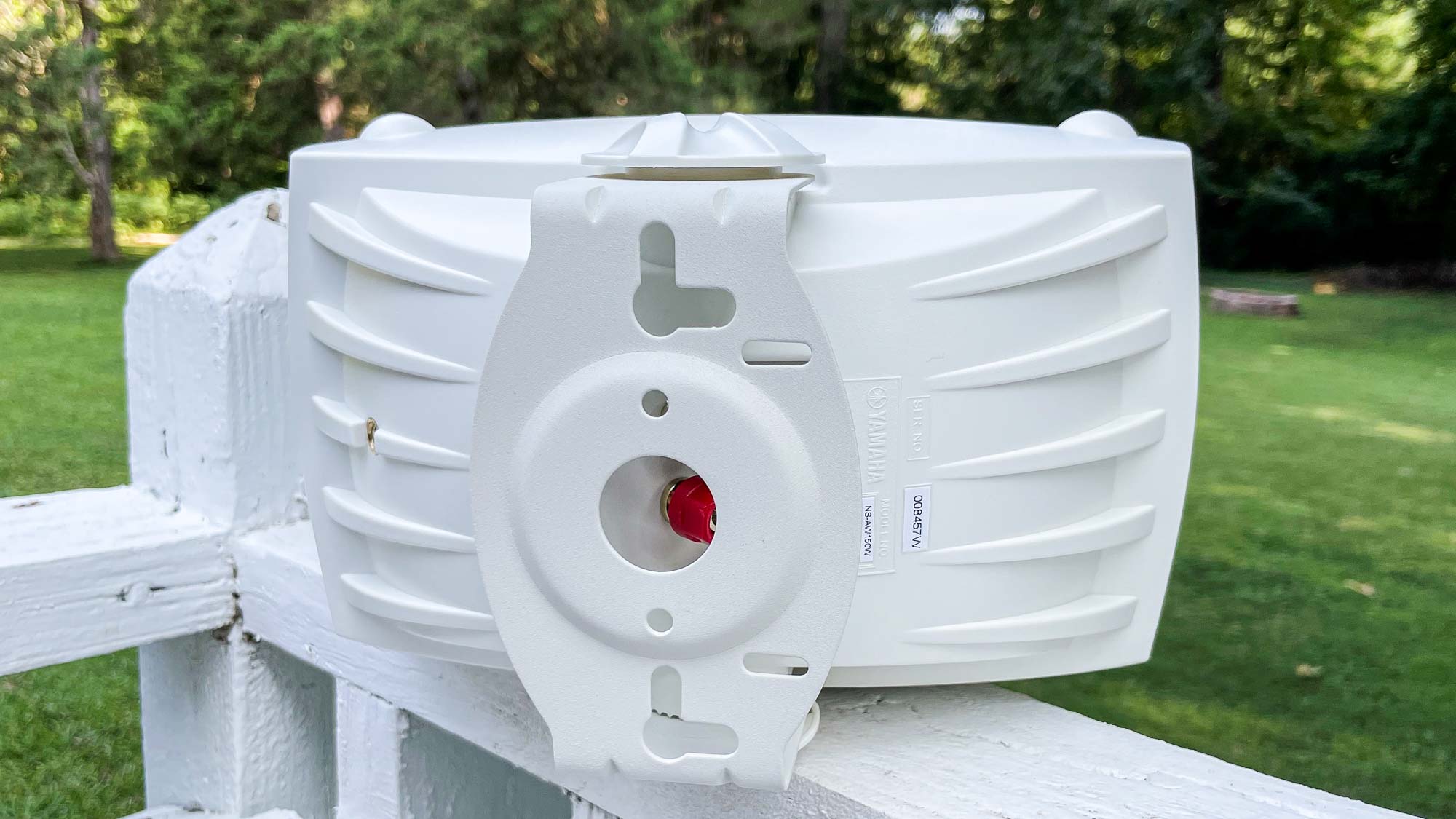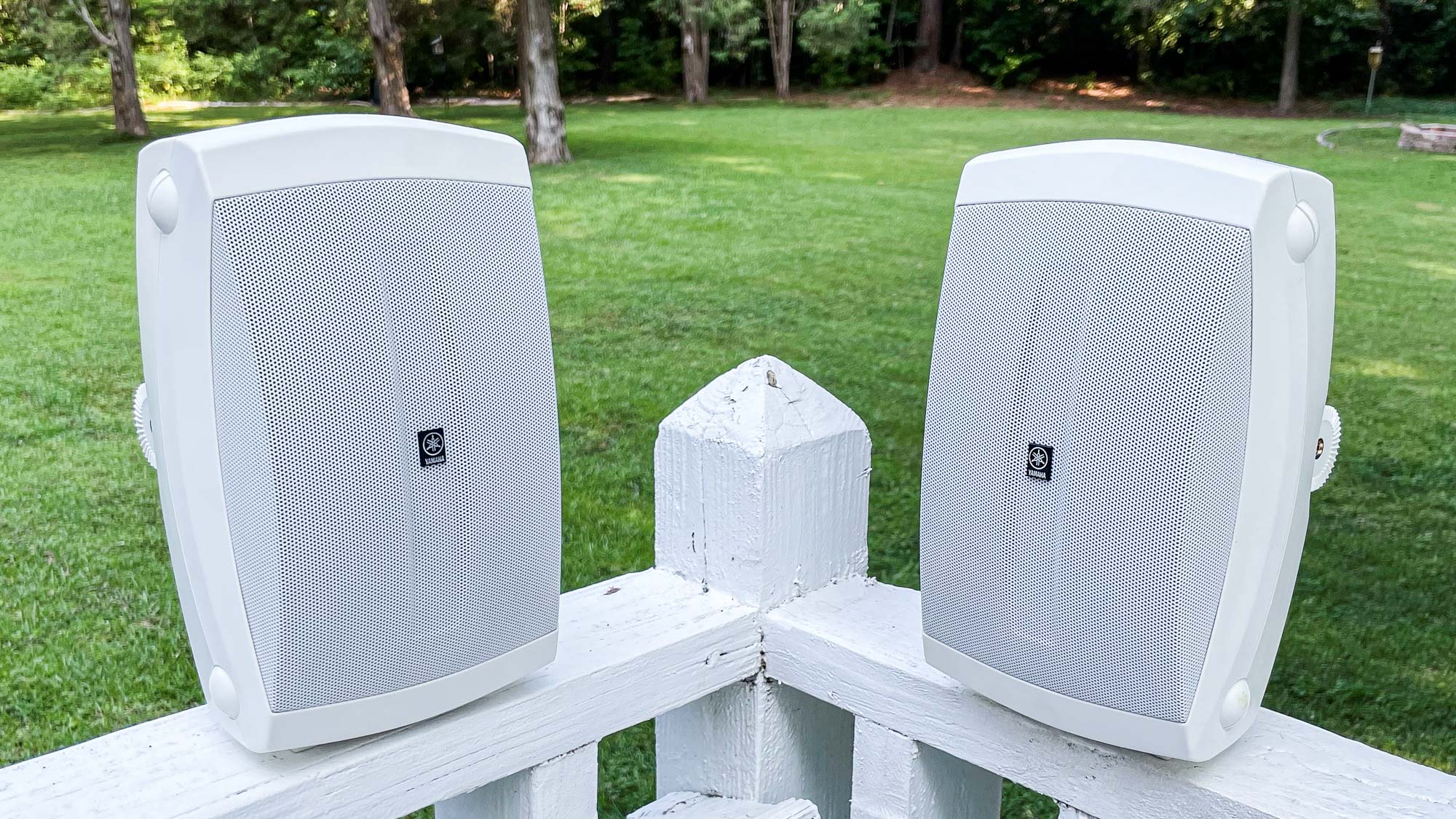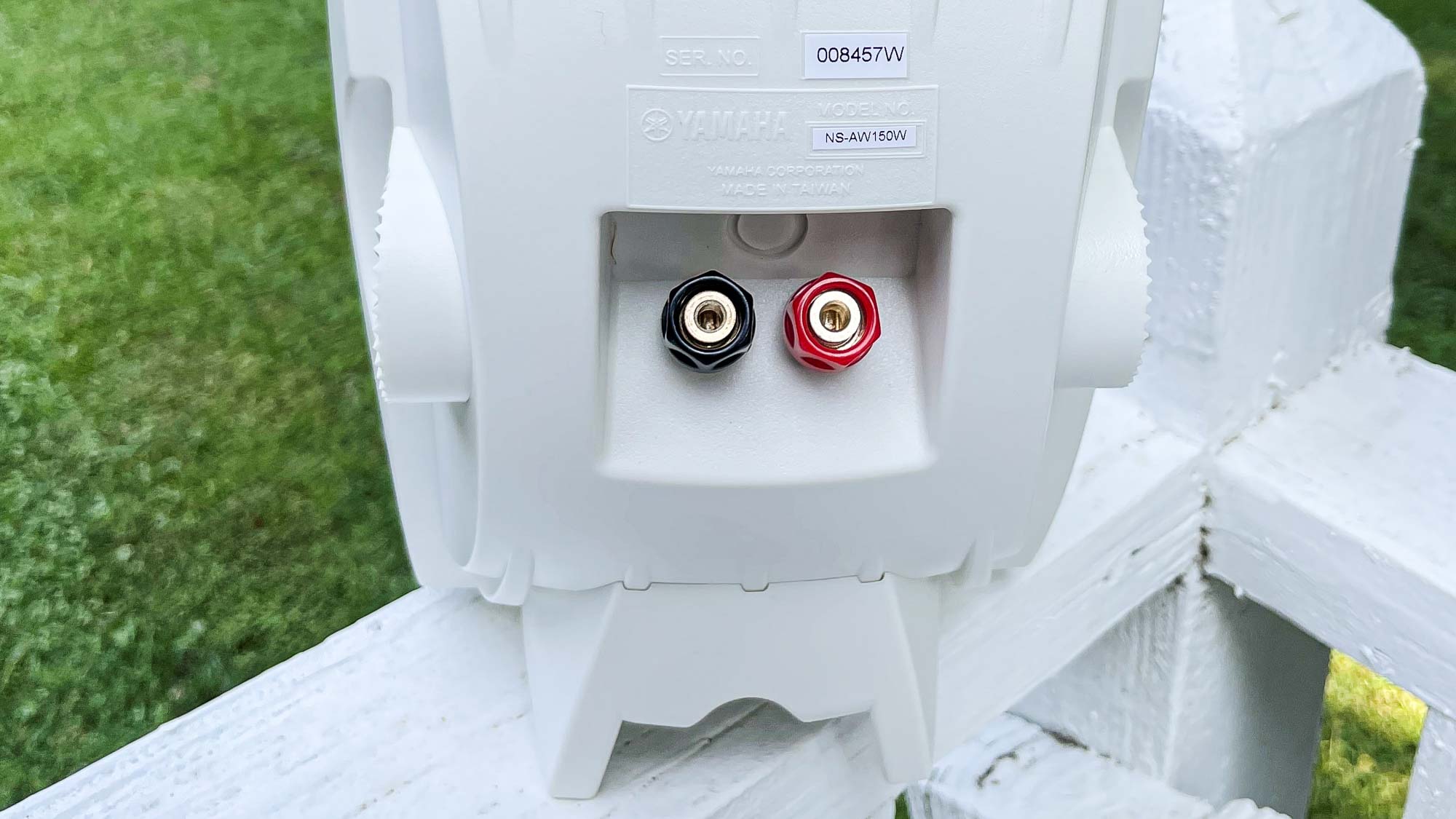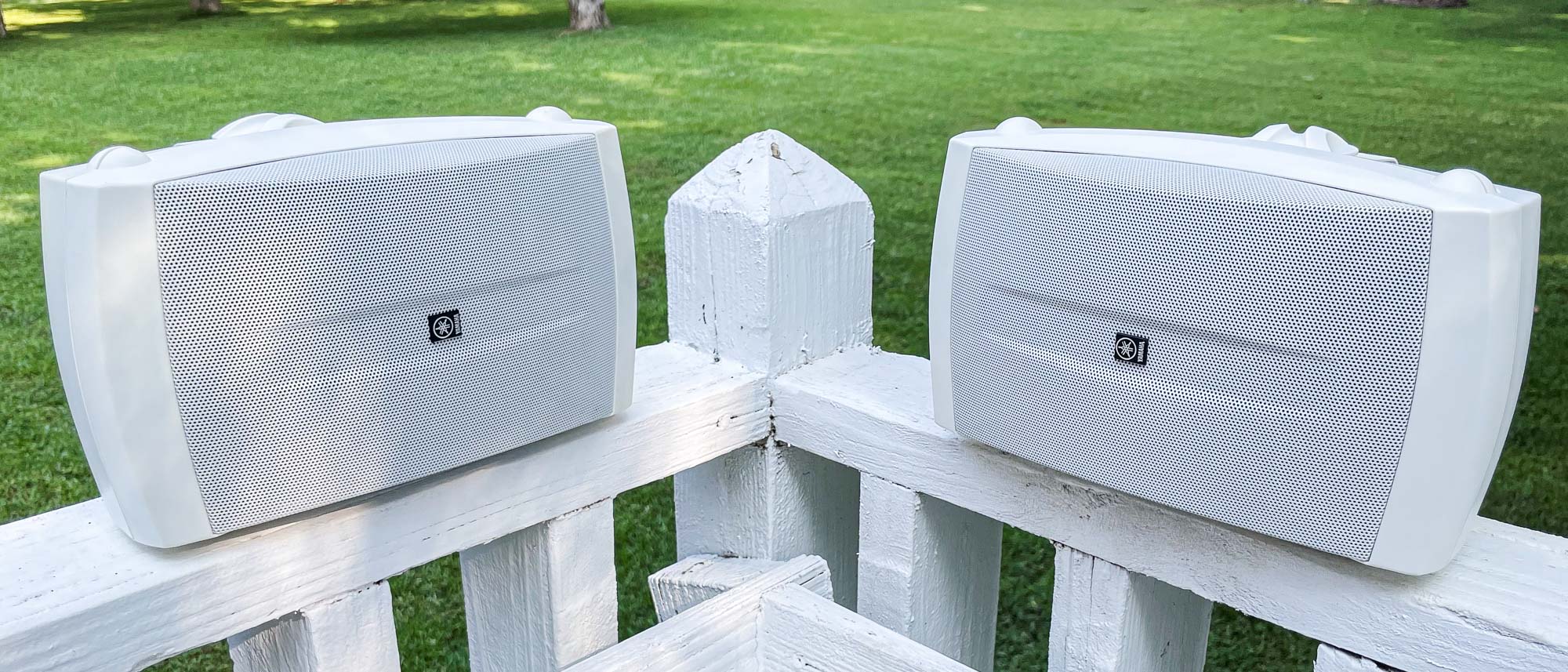Tom's Guide Verdict
The Yamaha NS-AW150W outdoor speakers produce a bright sound with full vocals, at an excellent price.
Pros
- +
Crisp treble
- +
Full vocals
- +
Flexible mounting
Cons
- -
Mediocre bass
- -
Water resistant, not waterproof
Why you can trust Tom's Guide
If you’re looking for wired outdoor speakers to bring music to your deck or screened porch, the Yamaha NS-AW150W hit a sweet spot in sound, size and cost. Available for about $100 for the pair, the NS-AW150W deliver good overall sound, with especially crisp treble and full vocals.
The bass isn’t as powerful as others among the best outdoor speakers, but few speakers this size hammer out the low end well. The NS-AW150W also come with two ways to place them, and can be used indoors as well — flexibility that most outdoor speakers don’t offer. Read on for our full review of the Yamaha NS-AW150W.
- Check out the best bluetooth speakers…
- ...and the best computer speakers
Yamaha NS-AW150W: Price and Availability
The NS-AW150W have been around a long time — Amazon lists them as first available in 2004 — and have stood the test of time. The price fluctuates, but as of this writing the white version I reviewed is available at Amazon and Crutchfield for $99, as well as at other online retailers.
The speaker also comes in black, though that version is currently out of stock on most sites.
Yamaha NS-AW150W review: Design
The NS-AW150W’s looks mostly fall in line with the traditional, rectangular bookshelf style speaker, though the back is curved to allow you to swivel it when you mount it. The 10 x 6 x 5.19-inch speakers are neither the biggest nor the smallest wired outdoor speakers you’ll find.

Each NS-AW150W speaker has a half-inch dome tweeter and 5-inch woofer. The drivers are encased in hard plastic and are covered with perforated metal that should withstand the elements. I tested the white model, but it is more of an off-white compared to other white outdoor speakers.

The speakers can be mounted with the included hardware, and they are designed to be either horizontal or vertical, depending on which works best for your situations. The NS-AW150W also come with a base if you just want to place them on a table — another nice touch.
Yamaha NS-AW150W review: Performance
When you’re listening outside, detail isn’t usually the highest priority, but the NS-AW150W offered a good amount anyway. Vocals pop in the mix — probably the most important part when you’re listening among the sounds of nature, or a pool party. The speakers produce a crisp sound with some bass, though the low frequencies may get lost among ambient sounds. The sound is also fairly narrow, meaning it doesn’t spread as widely across an open backyard. Polk’s Atrium 4 speakers deliver better bass and a wider sound, but those come at a price premium.
Billie Eilish’s voice sounded clear and full on “Therefore I Am,” while the thumping bass line was audible, though not dominant. Similarly on the Weeknd’s “Blinding Lights,” his vocals were prominent and the keys were sharp, but the menacing bass was lacking depth. The NS-AW150W’s brightness made the piano and guitar on The War on Drugs “Living Proof” sound realistic, while Adam Granduciel’s voice sounded suitably rich.
The speakers are rated for 35 watts. When I pushed the volume, the speakers started to distort at about 90 decibels and sounded much more comfortable at 80-85 decibels. Your neighbors will thank you if you keep it in that range.
Yamaha NS-AW150W review: Ruggedness
Yamaha doesn’t provide a waterproof rating for the NS-AW150W, but does say the speakers are water resistant. That usually means they can withstand splashing but you don’t want to submerge them in water. In general, outdoor speakers such as these are intended to be somewhat shielded from rain instead of fully exposed.
Yamaha NS-AW150W review: Setup
The NS-AW150W aren’t powered — meaning you need an amp to provide the power. If you have a home theater receiver with a separate zone, you can use it as the source of your source, or you can connect a dedicated amp for your outdoor speakers. You connect the speakers to the amp through speaker wire inserted into the input terminals on the back. The NS-AW150W offered good access to the terminals. The terminals also support banana plugs.

To mount the speakers to a wall, you screw the bracket to the wall and then use bracket screws to attach the speaker. You can then swivel the speakers to get the best angle for the sound in your space. There’s a safety wire included as a backup in case the bracket screws come loose.
Yamaha NS-AW150W review: Verdict
If you want wired outdoor speakers, it’s hard to beat the Yamaha NS-AW150W. They produce good vocals and crisp treble, and throw in a bit of bass too — all for just $99 for the pair.
The best outdoor speakers are about more than just sound. They have to be flexible enough to fit in the space that you have, and sure enough the Yamaha NS-AW150W will work in a lot of different settings.
When audio quality matters most, the Polk Atrium 4 speakers have a bigger and bassier sound. If you’re looking for something a little less expensive, the Dual LU53 sound almost as good, though they are bulkier. The Yamaha NS-AW150W therefore hit a real sweet spot for wired outdoor speakers.
More: Our picks of the best waterproof speakers

Michael Gowan is a freelance technology journalist covering soundbars, TVs, and wireless speakers of all kinds of shapes and sizes for Tom’s Guide. He has written hundreds of product reviews, focusing on sound quality and value to help shoppers make informed buying decisions. Micheal has written about music and consumer technology for more than 25 years. His work has appeared in publications including CNN, Wired, Men’s Journal, PC World and Macworld. When Michael’s not reviewing speakers, he’s probably listening to one anyway.

